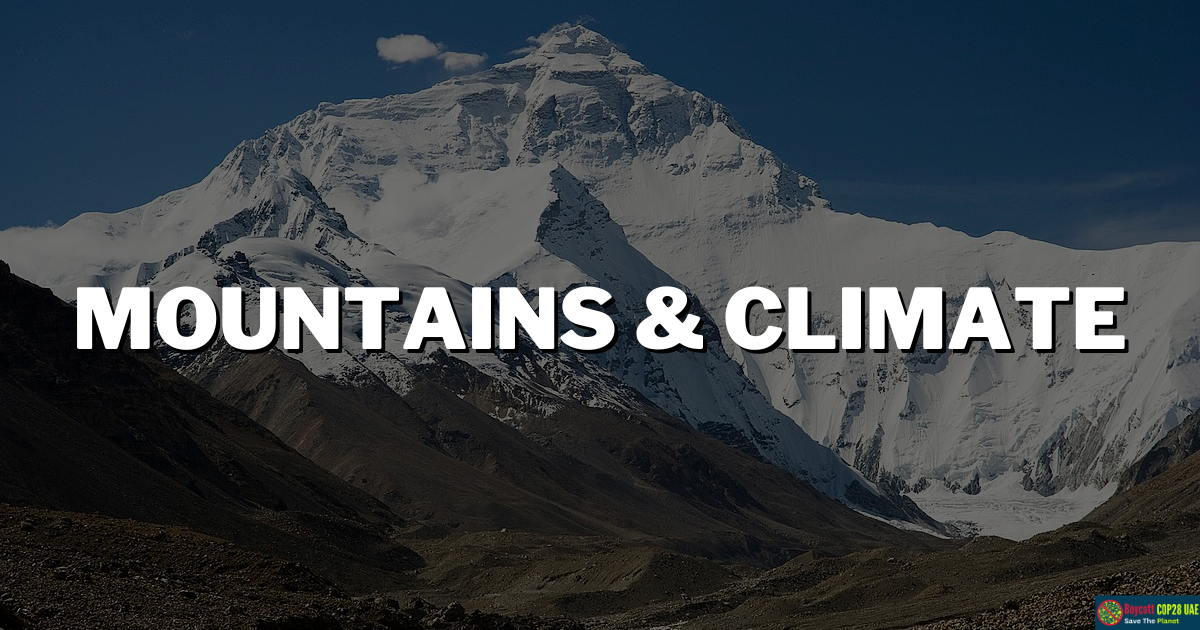Mountains have a great impact on the climate of the surrounding areas. The height, location, and shape of a mountain can alter the temperature, precipitation patterns, and wind patterns of the region. These changes can have both positive and negative effects on the local ecosystems and human populations. How do mountains affect climate is essential to understand for predicting and adapting to climate change. In this discussion, we will explore the ways in which mountains influence climate and the various environmental and societal impacts that result from these changes.
How Do Mountains Affect Climate?
To get an answer to your query: How do mountains affect climate? Please read this section thoroughly.
The presence of mountains can significantly influence the weather and climate of an area. One noticeable effect is the change in temperature and moisture levels. As you ascend a mountain, the temperature gradually drops, resulting in colder conditions. Consequently, mountainous regions typically experience more rainfall than flatlands. Mountain weatherm is also known for its instability.
It can change rapidly, from clear skies to thunderstorms within minutes, and temperature fluctuations can be extreme, ranging from scorching heat to sub-zero temperatures.
The reason for the increased rainfall is due to the difference in temperature at higher elevations. The temperature at the top of a mountain is usually cooler than at sea level. This temperature difference causes the air to rise, cool, and condense, leading to the formation of clouds and precipitation. Therefore, mountains can have a significant impact on the local weather and climate.
Mountains Vs. Precipitation
Precipitation refers to any kind of water that falls from the sky, like rain, snow, hail or sleet. This happens when water vapor in the atmosphere condenses and then falls to the ground due to gravity.
The precipitation in a region depends on factors like temperature and land masses. Mountains can affect precipitation levels too. When air encounters a mountain, it is pushed upwards, and as it rises, it gets colder. This causes the moisture in the air to turn into precipitation, which falls on the windward side of the mountain. However, as the air descends on the leeward side of the mountain, it gets drier and warmer, creating a rain shadow.
This is why one side of a mountain range can receive heavy rainfall or snowfall while the other remains dry. This phenomenon can be observed in mountain ranges like the Sierra Nevada, the Himalayas and the Rocky Mountains.
Mountains Vs. Temperature
The temperature drops as you climb a mountain because the air gets thinner and cannot hold onto warmth. This makes the air cooler and more humid, which causes more precipitation to occur in higher areas.
This also means that different parts of the mountain can have vastly different weather conditions due to the quick shifts in temperature and climate. For instance, you can experience hot and humid weather in the lower regions of a mountain, while the higher areas can be covered in snow and ice. It’s like going through multiple climates as you ascend the mountain.
What Are The Different Facts About Mountains?
Here are some easy-to-understand facts about mountains:
Mountains are landscapes that rise steeply over 300 meters above the surrounding land. Sometimes they are found in groups, which we call mountain ranges. Examples of mountain ranges include the Lake District in England and Snowdonia in Wales. When several mountain ranges are connected, they form a mountain chain, like the Alps in Europe, the Rocky Mountains in North America, and the Andes in South America.
At the top of a mountain, it’s colder than at the bottom because the warm air rising from below expands and cools down as it gets higher. That’s why mountains are usually covered in snow and ice, which gives them their white appearance. Many mountains also have sharp peaks, ridges, and valleys, which make them popular destinations for hikers and climbers looking for a challenge.
The Bottom Line: How Do Mountains Affect Climate?
In a nutshell, as air moves across a mountain range, it is forced to rise, causing it to cool and form clouds and precipitation. Additionally, mountains create different temperature zones, known as altitudinal zones, with cooler temperatures at higher elevations. These temperature variations can create microclimates that support unique ecosystems. Finally, mountains can act as barriers to airflow, forming different climate patterns on either side of the mountain range.






